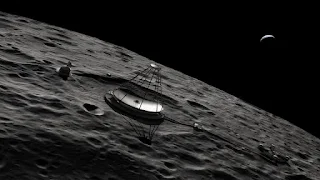
–
A world group of astronomers has carried out the primary radio astronomy observations of the lunar floor utilizing knowledge collected by the ROLSES telescope mounted on the U.S. Odysseus lunar probe.
The American College of Colorado press service quoted college professor Jack Burns as saying: “Consultants at Intuitive Machines achieved the unattainable by deploying our antennas in troublesome situations to land the Odysseus probe, The information is collected and despatched to Earth. With this knowledge, we’re capable of observe Earth “as if it had been one other planet orbiting a distant star. “
As Professor Burns factors out, this experiment marked the start of the period of lunar radio astronomy. The experiment was carried out aboard the Odysseus probe, which landed on the lunar floor in an emergency in February 2024 as a part of the IM-1 mission of NASA’s Business Lunar Payload Providers program half, geared toward growing strategies to ship payloads to the moon.
It’s price noting that the Odysseus probe was the primary U.S. probe able to touchdown on the lunar floor since December 1972, however its touchdown on the lunar floor didn’t occur as anticipated. Throughout contact with the lunar floor, one of many “legs” of the touchdown module broke, inflicting it to fall on its aspect.
Professor Burns stated the incident allowed scientists to implement a part of the Odysseus science programme, because the probe’s failed touchdown prevented the deployment of the remainder of the tools. Astronomers used this a part of the ROLSES antenna to watch radio waves at numerous frequencies emanating from Earth for an hour and a half.
It’s price noting that, because the researchers level out, the earlier such experiment was carried out in outer area throughout the Galileo probe’s journey to Jupiter in 1990, however “Rollsys” was capable of get hold of extra knowledge from observations from the moon floor. Professor Burns stated this success satisfied NASA to assist the remanufacturing of the ROLSES telescope, which can be despatched to the moon in 2026 as a part of one of many follow-up CLPS missions.
